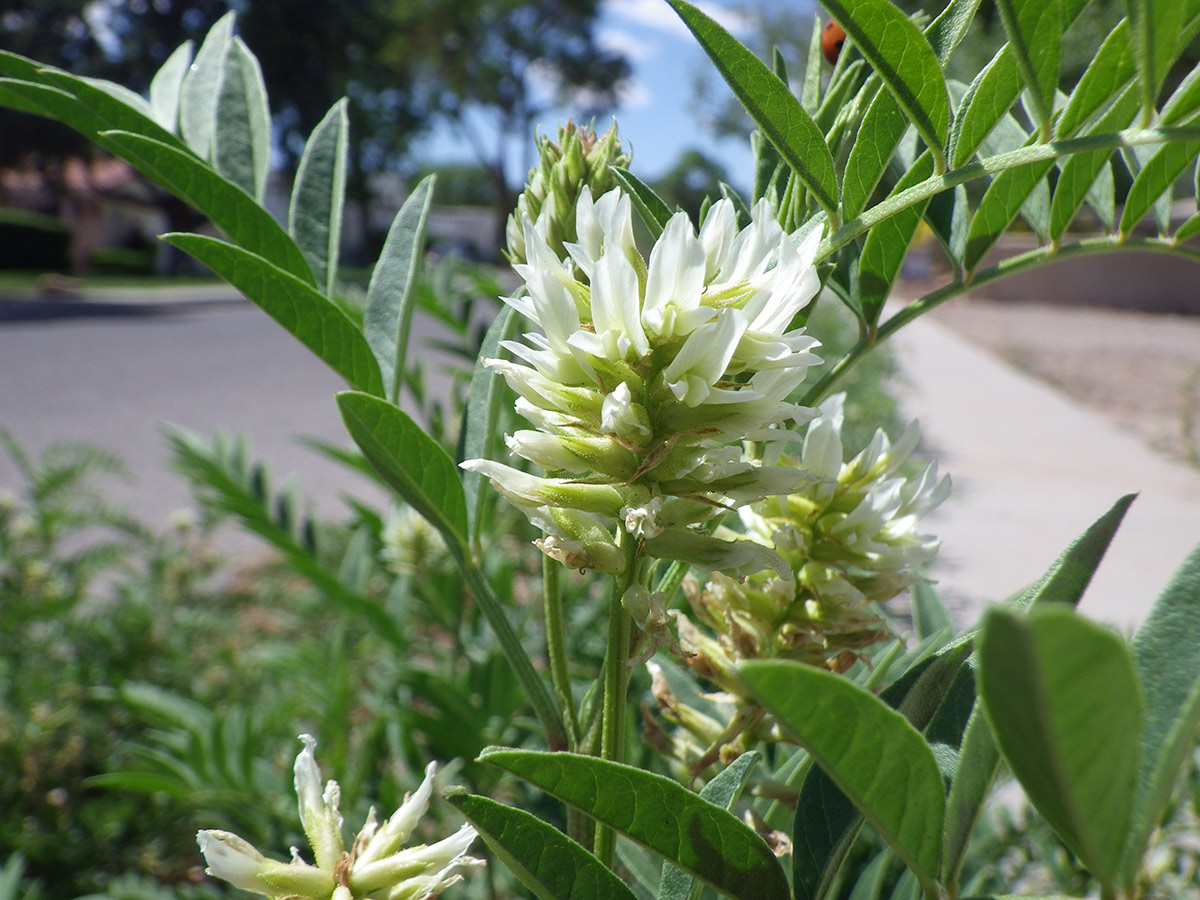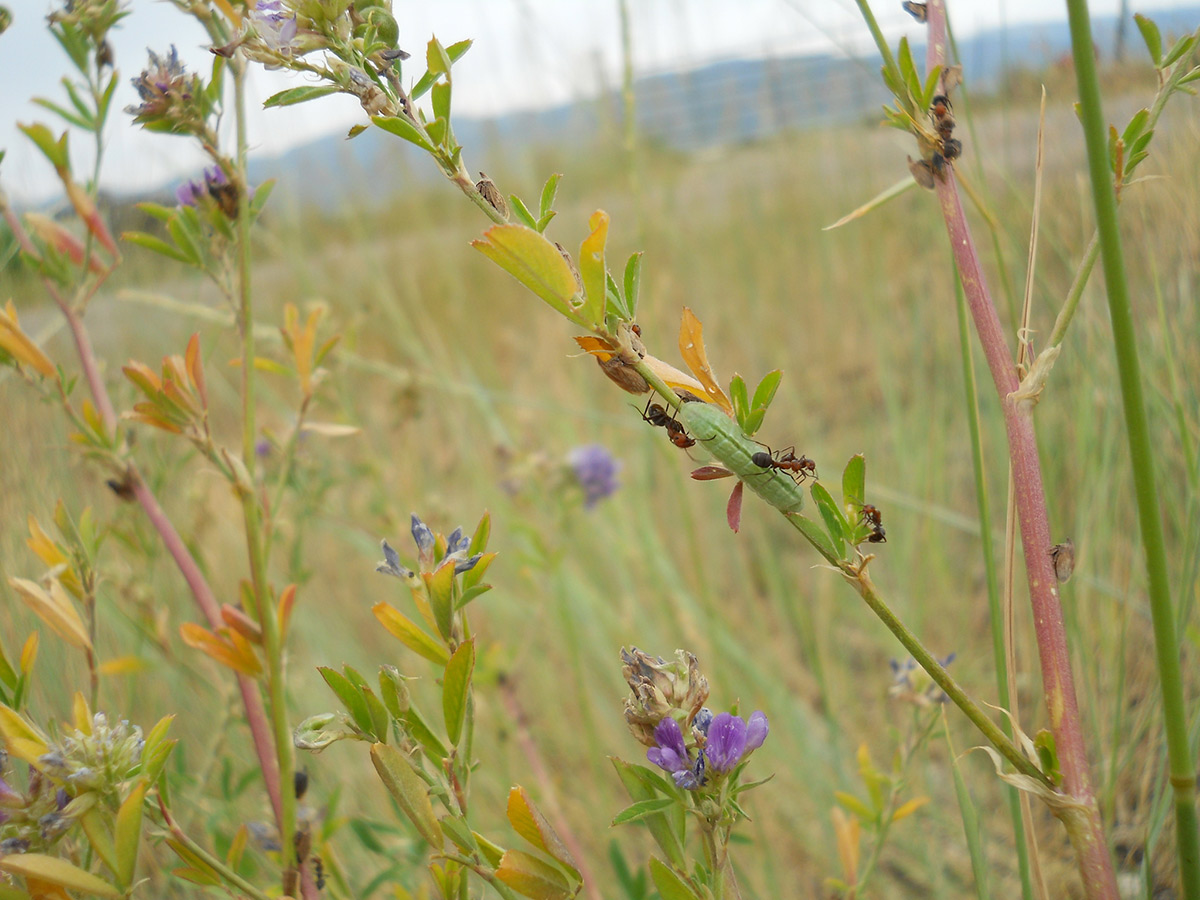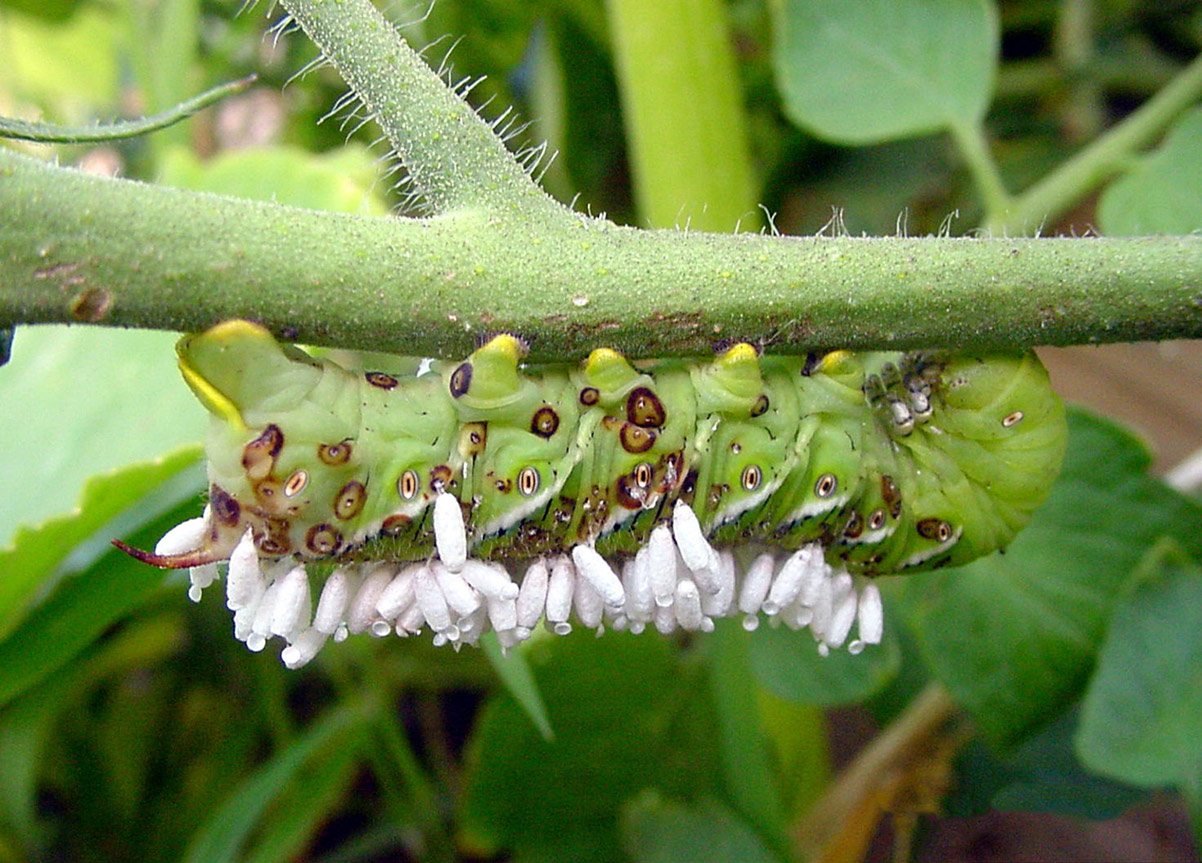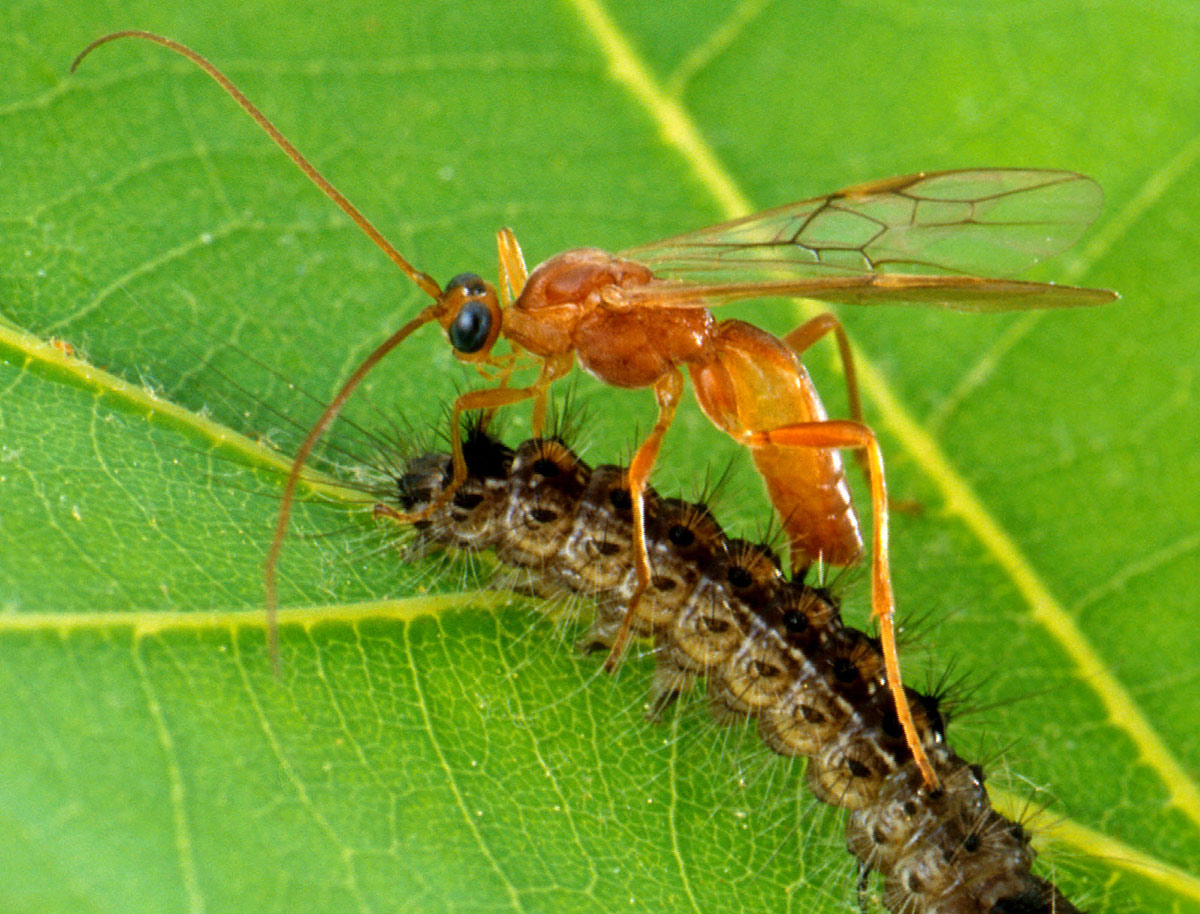This article originally appeared in our fall 2022 issue of Wings Magazine.
The connections between different species keep natural communities strong
On a summer day in 2011, I was sitting with my wife, Cynthia, in a hot, weedy parking lot in Bishop, California, staring deep down into the leaves of a wild licorice plant (Glycyrrhiza lepidota). The interactions between plants, and animals, and their landscape were, frankly, chaotic and amazing. Ants scurried up and down the plant, protecting their herd of aphids from hungry lady beetles. Above, bees, flies of all sizes, solitary wasps, and small butterflies moved from flower to flower in search of nectar and pollen.
Each of these ecological connections affects the survival of the species involved, and the health of the natural community. Nowhere is this more apparent than with endangered and extinct species. When a plant or animal is lost, the effects can easily ripple out beyond what we could anticipate.
But, by discovering and tracking the connections between species, we can predict, notice, and step in when a species begins to go missing. That is why a key foundation of invertebrate conservation (and all biology) is something so simple: take a closer look at what the bugs are doing.

Parasitoids are an important but sometimes overlooked type of predator
Among all the rapid motion on the licorice plant, we noticed a subtle interaction. Some ants would sit still on a stem or leaf, protecting superbly camouflaged caterpillars of the Melissa blue (Plebejus melissa)—stout, bright green, with yellowish lines along their bodies—they would easily be overlooked if not for the ant sentries. These caterpillars, like aphids, produce honeydew; in exchange for this sweet reward the ants will attack anything that comes near.

But, while many of the caterpillars’ predators are obvious and direct, there are others that hunt in more mysterious ways: parasitoids. This type of predator lays their eggs in, on, or near their prey, and when the eggs hatch, the parasitoid’s larvae then feed on the prey from the inside. This life cycle typically kills the caterpillar, but not before the parasitoid larva is fully developed, at which point it emerges from the caterpillar (perhaps along with many siblings) to metamorphose into an adult.
Parasitoids are an important part of nearly every terrestrial food web, just like other predators. Most parasitoids are wasps or flies. Some are directly valuable for humans: parasitoid wasps control many common caterpillar crop pests. Other parasitoid communities keep in check populations of native bark beetles, limiting outbreaks that could be destructive to forests. And because most are extremely specialized, feeding on only a few different species of host animals, they are very diverse, with many new species yet to be discovered.
But, the connections between a parasitoid and its community can be difficult to notice. Many species can be very small, sometimes only a fraction of an inch (a few millimeters) in size. And even finding adults does not tell you what the parasitoid larvae need as a host. Once a caterpillar has been parasitized, it tends to look almost identical to a healthy individual, and the adult parasitoid is long gone. The only way to find out which parasitoids feed on which caterpillars is to monitor caterpillars to see what emerges.

Even one caterpillar species can be a vital resource for many different parasitoids
On that hot summer day, Cynthia and I carefully collected the Melissa blue caterpillars, and a portion of the plants they were on. As part of a research study to document parasitism in different habitats and species, these caterpillars were bound for a laboratory at the University of Nevada, Reno. There, Cynthia would continue feeding and monitoring the caterpillars for the next few weeks. From 2010 to 2011, we studied more than five hundred caterpillars from six different sites in California and Nevada. When all was said and done, we found a total of five different parasitoid species—two flies and three wasps—feeding on (in) this one species of caterpillar!
Among the three wasp species was Aleiodes cultrarius. One of the few things already known about this wasp was that its only documented host was the caterpillar of the Xerces blue (Glaucopsyche xerces)—the first butterfly known to have become extinct in the United States due to human activity. If this parasitoid wasp fed only on Xerces blue caterpillars, one might assume that it also was headed for extinction. But from our work, Cynthia and I learned that the wasp can also raise its young on the Melissa blue butterfly. This butterfly is a fairly widespread species, which explains how the wasp managed to survive the extinction of the Xerces blue in the 1940s.
I hope that the wasp is thriving now, over ten years later. Life is hard for wasps, though, just as it is for caterpillars. Parasitoids like A. cultrarius need abundant prey, meaning that they need thriving butterfly populations. Worryingly, those are harder to come by, with recent research suggesting that a majority of butterfly species of the western United States are in mild to severe decline, even including widespread species.

Protecting parasitoids is a part of supporting our local wildlife
People often ask, “Why should we bother to protect rare or endangered species?” It can be hard to make a caterpillar glamorous, and perhaps even harder to make a person feel sympathy for an insect that eats a caterpillar from the inside, but we need these animals and their connections, even those we do not know about. Losing the seemingly unremarkable caterpillar of one species might actually mean the loss of an important resource for four or five other parasitoid species.
These important though seldom-noticed creatures are in our gardens, parks, and natural areas alongside butterflies, bumble bees, and other charismatic insects. We can help to protect them from extinction in the same ways we protect other species, by planting native plants and reducing pesticide use. And when you do put plants in, I’d encourage you to sit next to them, and investigate the activity on the flowers and among the leaves. You never know what you may find.




